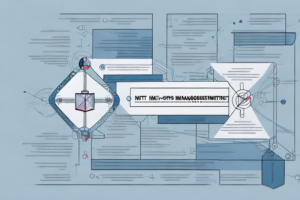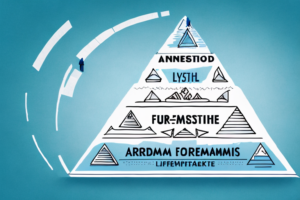What is security control modification in RMF?
7 min read
A computer system with a security control modification process in action
When it comes to managing cybersecurity risks, organizations must adopt a comprehensive and structured approach to ensure the protection of critical assets from a wide range of threats. The Risk Management Framework (RMF) is an essential component of any cybersecurity program as it provides a structured and repeatable process that ensures effective risk management and governance. At the core of RMF is the process of security control modification, which involves the ongoing assessment and modification of controls to manage and mitigate security risks effectively. In this article, we will explore the key principles of RMF, the importance of security control modification, and the best practices involved in ensuring effective control modification within the RMF framework.
Understanding the core principles of RMF
The Risk Management Framework is a proactive and coordinated approach to managing cybersecurity risks. It provides a structured process that involves identifying, assessing, and evaluating risks to an organization’s critical assets, and mitigating those risks through the implementation of appropriate security controls. The core principles of RMF are:
- Continuous monitoring and feedback
- Integration with existing organizational processes
- A risk-based approach
- Flexibility and adaptability
- Collaboration and communication
These principles guide the RMF process, which consists of six stages: categorization, selection, implementation, assessment, authorization, and monitoring. Security control modification plays a crucial role in ensuring the effectiveness and ongoing validity of security controls throughout the RMF process.
It is important to note that the RMF process is not a one-time event, but rather a continuous cycle of risk management. As new threats emerge and organizational priorities change, the RMF process must be revisited and updated to ensure that security controls remain effective. Additionally, the RMF process should be integrated into an organization’s overall risk management strategy, and should involve collaboration and communication between all stakeholders, including IT, security, and business leaders.
Navigating security control modification in RMF
Security control modification is an ongoing process in RMF that involves assessing and modifying security controls to ensure they remain effective in managing cybersecurity risks. The process of control modification involves several steps, including:
- Identifying the changes that need to be made to the security controls
- Analyzing the potential impact of the changes
- Implementing the modifications
- Assessing the effectiveness of the modified controls
The goal of security control modification is to ensure that security controls remain effective and appropriate throughout the RMF process, as cybersecurity risks are constantly evolving and changing over time.
It is important to note that security control modification is not a one-time event, but rather an ongoing process that should be integrated into the overall risk management strategy. This means that security controls should be regularly reviewed and updated to ensure they remain effective in managing cybersecurity risks. Additionally, it is important to involve all stakeholders in the control modification process, including IT staff, security personnel, and business leaders, to ensure that modifications are aligned with organizational goals and objectives.
Why is security control modification important in RMF?
The process of security control modification is essential in RMF as it ensures that security controls remain valid and effective throughout the lifecycle of an organization’s critical assets. Organizations are constantly faced with new and evolving security threats, and the security controls put in place to counter these threats may no longer be effective. Without security control modification, organizations may be left vulnerable to security breaches and other cybersecurity risks.
Moreover, security control modification is important in RMF because it helps organizations to comply with regulatory requirements. Many industries are subject to strict regulations that require them to maintain a certain level of security. By modifying security controls, organizations can ensure that they are meeting these requirements and avoiding potential penalties or legal consequences.
Finally, security control modification is important in RMF because it allows organizations to adapt to changes in their environment. As organizations grow and evolve, their security needs may change. By modifying security controls, organizations can ensure that they are keeping up with these changes and maintaining an appropriate level of security for their assets.
The impact of security control modification on an organization’s cybersecurity posture
The impact of security control modification on an organization’s cybersecurity posture is significant. Effective control modification ensures that the security controls in place are appropriate and effective in managing the latest cybersecurity threats. This, in turn, reduces the risk of security incidents and breaches and helps to maintain the organization’s overall cybersecurity posture.
However, it is important to note that security control modification should not be a one-time event. Cybersecurity threats are constantly evolving, and security controls must be regularly reviewed and updated to ensure they remain effective. Failure to do so can result in security gaps that can be exploited by cybercriminals, leading to potential data breaches and financial losses for the organization.
Common challenges faced during security control modification in RMF
Despite the importance of security control modification, there are several challenges that organizations may face when implementing this process. Some common challenges include:
- Identifying appropriate modifications to security controls
- Ensuring that modified controls remain effective and appropriate
- Maintaining consistent communication and collaboration across all stakeholders involved in the modification process
- Managing the impact of modifications on the organization’s overall cybersecurity posture
To overcome these challenges, organizations need to adopt a structured and collaborative approach to security control modification and ensure that all stakeholders are involved in the process.
One of the biggest challenges faced during security control modification is the lack of resources and expertise. Organizations may not have the necessary resources or expertise to identify appropriate modifications to security controls or to ensure that modified controls remain effective and appropriate. This can lead to delays in the modification process and may result in ineffective security controls.
Another challenge is the constantly evolving threat landscape. As new threats emerge, organizations need to modify their security controls to address these threats. However, this can be a time-consuming and complex process, and organizations may struggle to keep up with the pace of change in the threat landscape.
Best practices to ensure successful security control modification in RMF
Effective security control modification requires a structured approach that involves the following best practices:
- Regularly assessing and evaluating the organization’s cybersecurity risks
- Identifying appropriate modifications to security controls based on assessed risks
- Implementing appropriate changes in a systematic and controlled manner
- Monitoring the effectiveness of modified controls regularly
- Ensuring consistent communication and collaboration across all stakeholders involved in the process
By adopting these best practices, organizations can ensure that security control modification is a proactive and effective process that contributes to managing cybersecurity risks throughout the RMF process.
How to implement and maintain effective security control modification in RMF
To implement and maintain effective security control modification in RMF, organizations need to adopt a structured process that involves the following steps:
- Regularly assessing and evaluating cybersecurity risks
- Identifying appropriate modifications to security controls
- Implementing modifications in a systematic and controlled manner
- Assessing and evaluating the effectiveness of modified controls regularly
- Maintaining consistent communication and collaboration across all stakeholders involved in the process
This process ensures that security controls remain effective and appropriate throughout the RMF process and helps to maintain the organization’s overall cybersecurity posture.
An overview of the assessment and authorization process in RMF
The assessment and authorization process is a critical component of RMF that involves evaluating the effectiveness of security controls and ensuring that they meet the organization’s cybersecurity requirements. The process involves assessing the risk associated with an information system, selecting and implementing appropriate security controls, and evaluating the effectiveness of those controls. Once completed, the information system is authorized to operate based on the assessed risk and the effectiveness of the security controls in place.
The role of continuous monitoring in ensuring effective security control modification in RMF
Continuous monitoring is an essential component of RMF as it ensures that security controls remain effective and appropriate throughout the lifecycle of an organization’s critical assets. Continuous monitoring involves regularly assessing and evaluating the effectiveness of security controls, identifying and responding to security events and incidents, and notifying all stakeholders when necessary. By adopting a continuous monitoring approach, organizations can stay ahead of evolving cybersecurity risks and ensure that their security controls remain effective and appropriate.
Security control modification case studies: Lessons learned
There have been several instances where effective security control modification has played a significant role in protecting organizations from cybersecurity risks. One such case study involves a financial institution that identified vulnerabilities in its security controls through regular assessments and modifications and proactively mitigated those risks. Another case study involves a healthcare organization that implemented appropriate security controls to manage the risk associated with third-party access to its network, effectively managing the risks associated with this access.
Future trends and developments in security control modification within the RMF framework
The cybersecurity landscape is continually evolving and changing, and security control modification within the RMF framework will need to adapt to meet these changes. There is a growing focus on adopting more proactive and streamlined approaches to security control modification, leveraging advanced technologies such as artificial intelligence and machine learning to identify and mitigate cybersecurity risks more effectively.
Conclusion
As organizations continue to face growing cybersecurity threats, the need for effective security control modification within the RMF framework becomes more critical. Organizations need to adopt a structured and collaborative approach to control modification, ensuring that security controls remain effective and appropriate throughout the organization’s critical assets’ lifecycle. By proactively managing cybersecurity risks through effective security control modification, organizations can maintain their overall cybersecurity posture and protect their critical assets from emerging threats.



